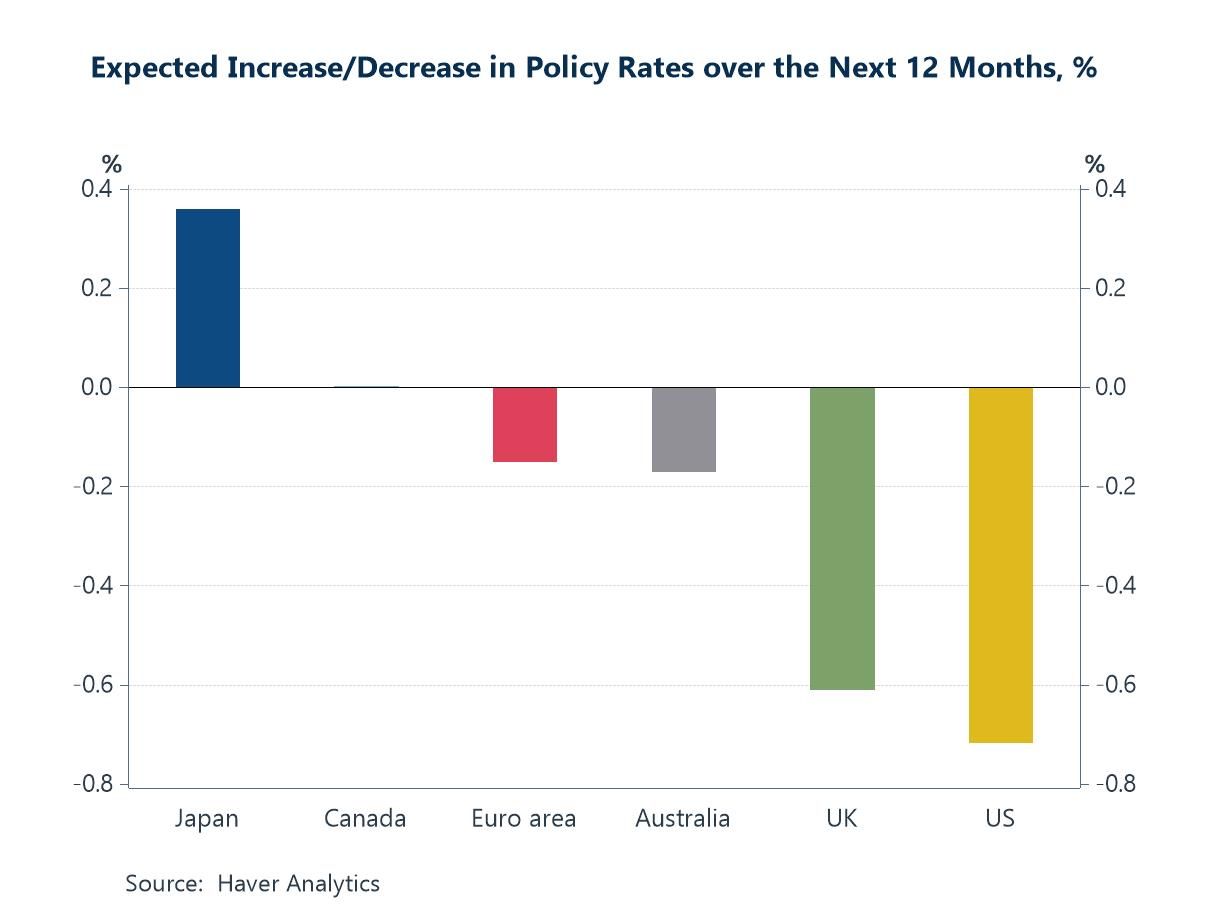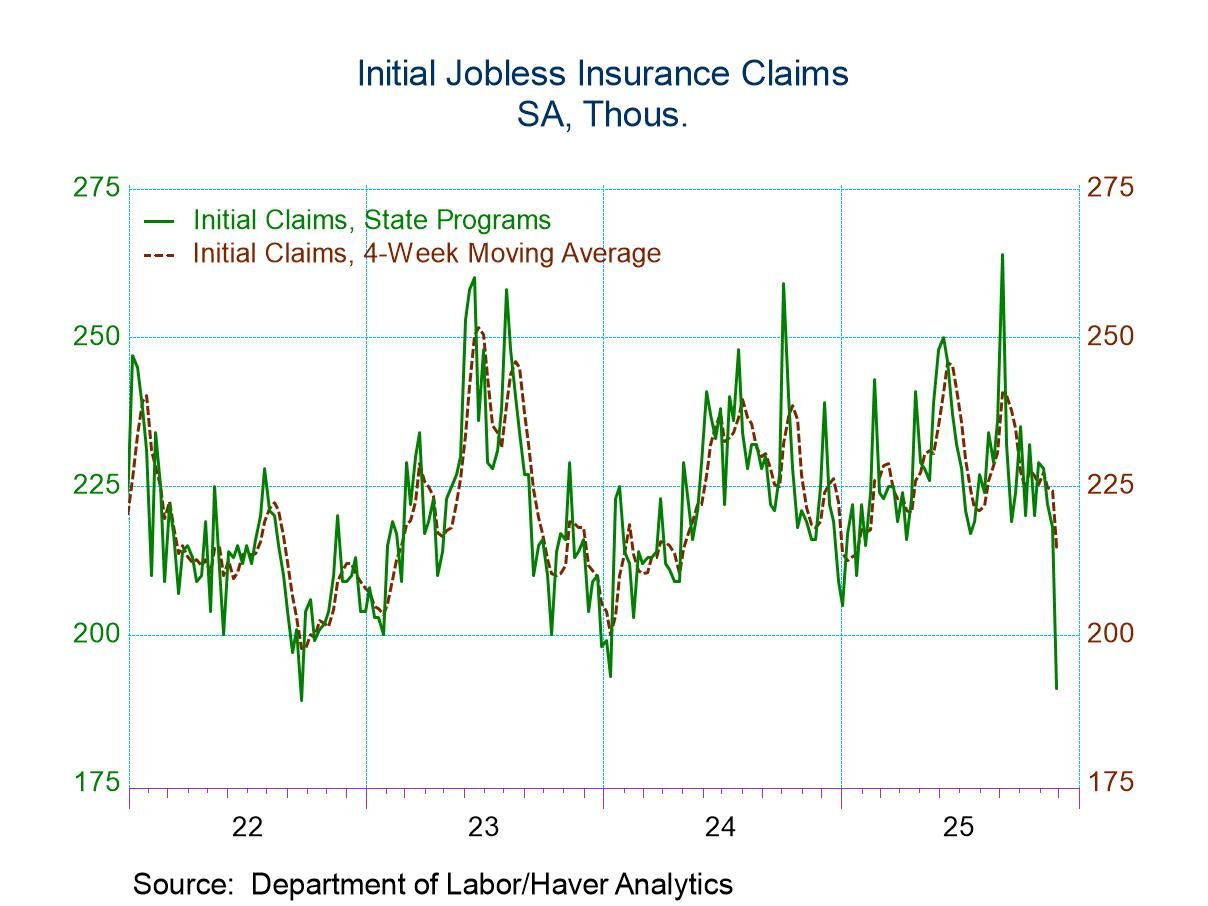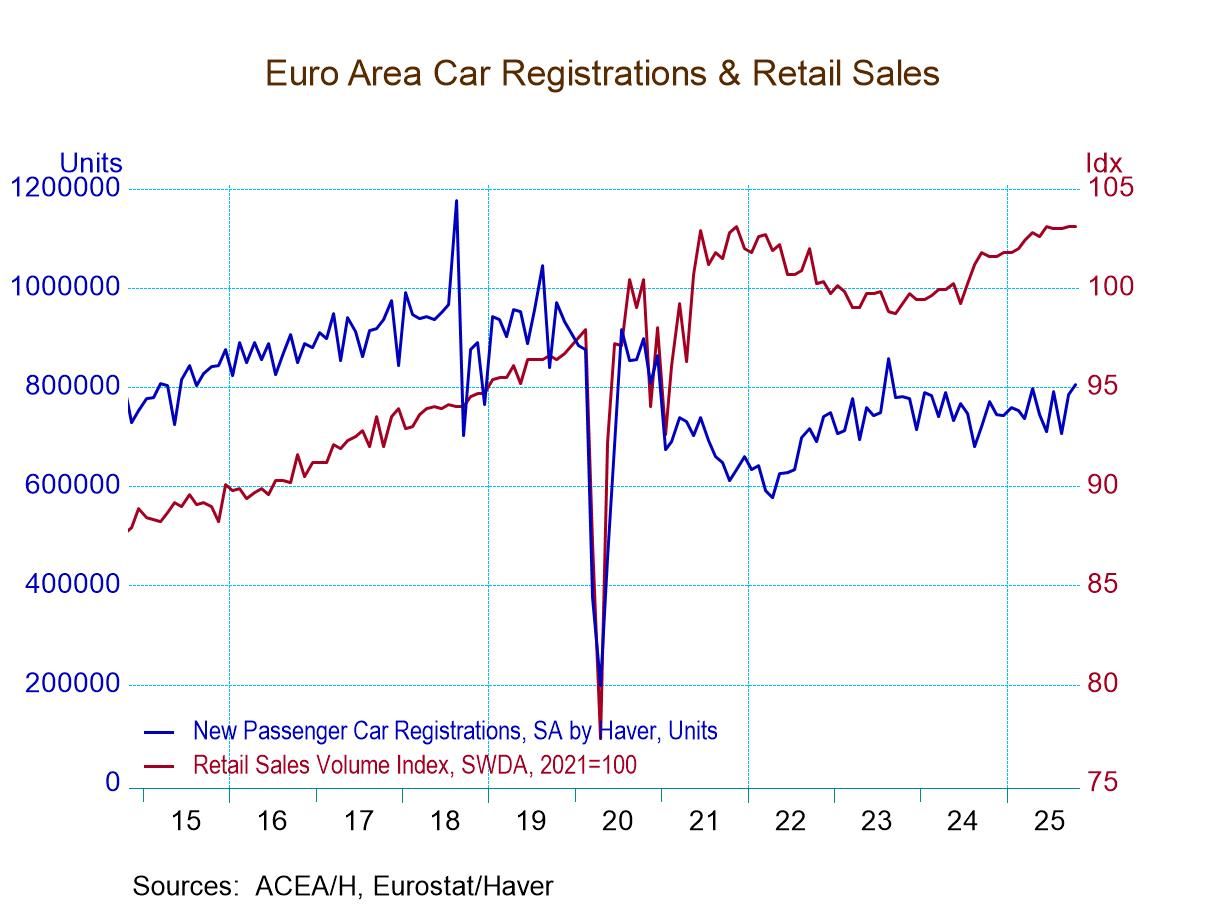 Global| Oct 05 2006
Global| Oct 05 2006Brazil's Industry Strengthening or Slowing, Depending on Who You Ask, But Consumer Expectations at High
Summary
Industrial production in Brazil rose 0.7% in August, according to the official Institute for Brazilian Geography and Statistics (IBGE), in a report out this morning. This followed a similar 0.7% gain in July, more than offsetting a [...]

Industrial production in Brazil rose 0.7% in August, according to the official Institute for Brazilian Geography and Statistics (IBGE), in a report out this morning. This followed a similar 0.7% gain in July, more than offsetting a 1.1% decline in June.
In the August result, capital goods and consumer durables were the sources of strength, the former up 2.8% and the latter, 1.6%. Intermediate goods output increased 0.6% as did the combined semi-durable and nondurable consumer goods.
Press coverage of these data was contradictory, giving an almost comedic vision of the "two-handed economist". One news service, which conducts a forecast survey, said the 0.7% total increase was "stronger than expected" by its survey, which looked to a 0.5% rise. This service highlighted the favorable impact on the real economy of much lower interest rates. Indeed, the overnight "Selic" interest rate averaged 14.66% in August, down from 19.75% a year ago and the lowest in the 20-year history of this money-market rate.
"On the other hand", another prominent wire-service bemoaned "slowing growth", noting that the year-on-year gain in August IP was "just" 3.2%, less than July's 3.5%. Various other time span comparisons can also be construed as suggesting the onset of less vigorous growth. This news service "blamed" the strengthening of the currency which makes Brazil's products less competitive; indeed, the JP Morgan real effective exchange rate averaged 141.1 (2000=100) in September, among the highest single monthly values in the series, which extends back to 1970.
Differing interpretations can support either of these views. What does seem apparent to us is that Brazilian output swings widely: the recent pattern in industrial production can be seen as slow relative to double-digit gains in mid-2004 or stronger than the nearly stagnant performance in mid-2005. However, through this recent period, interest rates have been declining, the currency has been stronger (albeit with smaller gains than last year), and the stock market has corrected modestly after a steep run-up. This financial backdrop is yielding an inflow of capital funds for investment even as the current account remains in comfortable surplus. This sounds fairly attractive to us. The Brazilian people seem to agree: the National Confederation of Industry released its quarterly consumer confidence survey this morning as well. Its index of consumer expectations surged 5.8 points to a record in Q3 as respondents' assessments of nearly every macroeconomic measure were increasingly favorable.
| Aug 2006 | July 2006 | June 2006 | Year Ago | 2005 | 2004 | 2003 | |
|---|---|---|---|---|---|---|---|
| Total | 116.12 | 115.30 | 114.48 | 112.63 | 111.71 | 108.36 | 100.05 |
| % Change | 0.7 | 0.7 | -1.1 | 3.2 | 3.1 | 8.3 | 0.1 |
| Capital Goods | 2.8 | 1.2 | -0.5 | 7.4 | 3.6 | 19.7 | 2.2 |
| Intermediate Goods | 0.6 | 1.2 | -1.5 | 3.4 | 0.9 | 7.4 | 2.0 |
| Consumer Durable Goods | 1.6 | -0.2 | -0.9 | 5.4 | 11.4 | 21.8 | 3.0 |
| Consumer Semi- durable & Nondurable Goods | 0.6 | 3.0 | 1.7 | 1.2 | 4.6 | 4.0 | -3.9 |
Carol Stone, CBE
AuthorMore in Author Profile »Carol Stone, CBE came to Haver Analytics in 2003 following more than 35 years as a financial market economist at major Wall Street financial institutions, most especially Merrill Lynch and Nomura Securities. She had broad experience in analysis and forecasting of flow-of-funds accounts, the federal budget and Federal Reserve operations. At Nomura Securities, among other duties, she developed various indicator forecasting tools and edited a daily global publication produced in London and New York for readers in Tokyo. At Haver Analytics, Carol was a member of the Research Department, aiding database managers with research and documentation efforts, as well as posting commentary on select economic reports. In addition, she conducted Ways-of-the-World, a blog on economic issues for an Episcopal-Church-affiliated website, The Geranium Farm. During her career, Carol served as an officer of the Money Marketeers and the Downtown Economists Club. She had a PhD from NYU's Stern School of Business. She lived in Brooklyn, New York, and had a weekend home on Long Island.





